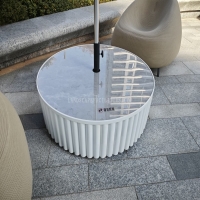Welcome to the website for landscape facilities products and knowledge.
How do manufacturers test the trash can’s resistance to prolonged exposure to moisture?
Manufacturers rigorously test trash cans for resistance to prolonged moisture exposure to ensure durability and longevity in wet environments. Common methods include:
1. Humidity Chamber Testing – Trash cans are placed in controlled chambers with high humidity levels (often 90-95% RH) for extended periods (weeks or months) to simulate tropical or coastal conditions.
2. Water Immersion Tests – Some bins undergo partial or full submersion in water to evaluate sealing effectiveness and material integrity, especially for waterproof models.
3. Salt Spray Testing – Coastal-area products face saltwater mist simulations to check corrosion resistance in metal components and coating durability.
4. Cyclic Moisture Exposure – Alternating wet and dry cycles test how materials expand, contract, or degrade over time.
5. Real-World Conditioning – Outdoor bins are placed in rain-prone regions for months to observe fading, warping, or mold growth.
High-quality trash cans use moisture-resistant materials like HDPE, stainless steel, or UV-stabilized plastics, often backed by accelerated lab tests mimicking years of exposure. Manufacturers validate results through third-party certifications (e.g., ASTM D4329 for plastic weathering). These tests ensure bins withstand humidity, rain, and spills without cracking, rusting, or bacterial growth.
Related search:

Recommendation
Round metal tube border design table with tempered glass or granite countertop on the top.